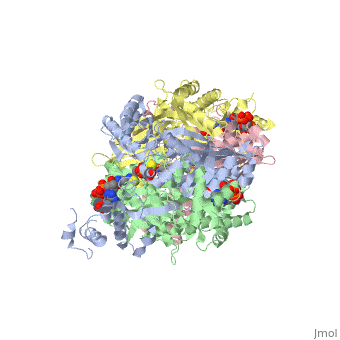Sandbox Reserved 827
From Proteopedia
| Line 5: | Line 5: | ||
| - | = Overall structure = | + | ==Your Heading Here (maybe something like 'Structure')==<StructureSection load='1dq8' size='500' side='right' caption='Structure of HMG-CoA reductase (PDB entry [[1dq8]])' scene=''>= Overall structure = |
<Structure load='4IW0' size='500' frame='true' align='right' caption='TBK1 monomer' scene='56/568025/Vide/1' /> | <Structure load='4IW0' size='500' frame='true' align='right' caption='TBK1 monomer' scene='56/568025/Vide/1' /> | ||
| Line 40: | Line 40: | ||
'''Polyubiquitination :''' Polyubiquitination in a Lys63 manner on | '''Polyubiquitination :''' Polyubiquitination in a Lys63 manner on | ||
| - | <scene name='56/568025/K30/1'>Lys30</scene> helps the activation of the kinase. The same type of modification on <scene name='56/568025/K401/1'>Lys401</scene> is responsible for dimerization. Type Lys48 polyubiquitination on Lys670 is done by DTX4 and is responsible for the degradation of the protein. | + | <scene name='56/568025/K30/1'>Lys30</scene> helps the activation of the kinase. The same type of modification on <scene name='56/568025/K401/1'>Lys401</scene> is responsible for dimerization. Type Lys48 polyubiquitination on Lys670 is done by DTX4 and is responsible for the degradation of the protein.</StructureSection> |
= Signalling pathways = | = Signalling pathways = | ||
Revision as of 15:23, 3 January 2014
| This Sandbox is Reserved from 06/12/2018, through 30/06/2019 for use in the course "Structural Biology" taught by Bruno Kieffer at the University of Strasbourg, ESBS. This reservation includes Sandbox Reserved 1480 through Sandbox Reserved 1543. |
To get started:
More help: Help:Editing |
TBK1 stands for Tank Binding Kinase 1. This enzyme is a cytoplasmic serine-threonine kinase, coded by EC=2.7.11.1. It catalyzes the transfer of a phosphate group from an ATP onto a protein, in order to form a phosphoprotein and an ADP. Its primary sequence is 729 residues long. This homodimere is involved in several signalization pathways such as the inhibition of apoptosis, inflammatory response. Its substrates are NF-κ-B, various IRFs (interferon regulatory factors), DDX3X. It is involved in several complexes depending on the cell type and the stimuli.
| |||||||||||
Contents |
Signalling pathways
Inflammatory response
The inflammatory response begin with the formation of the complex TBK1-TANK-TRAF. That allows phosphorylation of IRF3, IRF7 and DDX3X. Then these phosphorylated proteins form homodimers and they are translocated into the nucleus, where they activate transcription of interferon regulatory factors (IFN).
Anti-apoptosis
And the complex phosphorylates an inhibitor of NFkappaB, which finally activates NFkappaB, an anti-apoptotic transcription factor.
Diseases
Interaction with viral proteins :
TBK1 is the target of some viral proteins such as VP35 from Ebola virus [2] , or the P protein from Borna virus. Those proteins inhibit TBK1. Normally, TBK1 is responsible for virus-induced phosphorylations that lead to the cellular antiviral state. Therefore, the inhibition of the kinase prevents the establishment of such a cellular state. Since TBK1 is involved into the virus entrance following reaction, targeting TBK1 is a great solution for the viruses to prevent the reactions from the cell.
Oncology :
In case of some cancers, the permanent activation of TBK1 may be responsible of the proliferation of the cancerous cells. Since the substrates of TBK1 are involved in the proliferation pathway when phosphorylated, this permanent activation is a reason of the non apoptosis state of cells, and therefore of their proliferation.
References
- ↑ 1.0 1.1 Ma X, Helgason E, Phung QT, Quan CL, Iyer RS, Lee MW, Bowman KK, Starovasnik MA, Dueber EC. Molecular basis of Tank-binding kinase 1 activation by transautophosphorylation. Proc Natl Acad Sci U S A. 2012 Jun 12;109(24):9378-83. Epub 2012 May 22. PMID:22619329 doi:10.1073/pnas.1121552109
- ↑ Prins KC, Cardenas WB, Basler CF. Ebola virus protein VP35 impairs the function of interferon regulatory factor-activating kinases IKKepsilon and TBK-1. J Virol. 2009 Apr;83(7):3069-77. doi: 10.1128/JVI.01875-08. Epub 2009 Jan 19. PMID:19153231 doi:http://dx.doi.org/10.1128/JVI.01875-08

